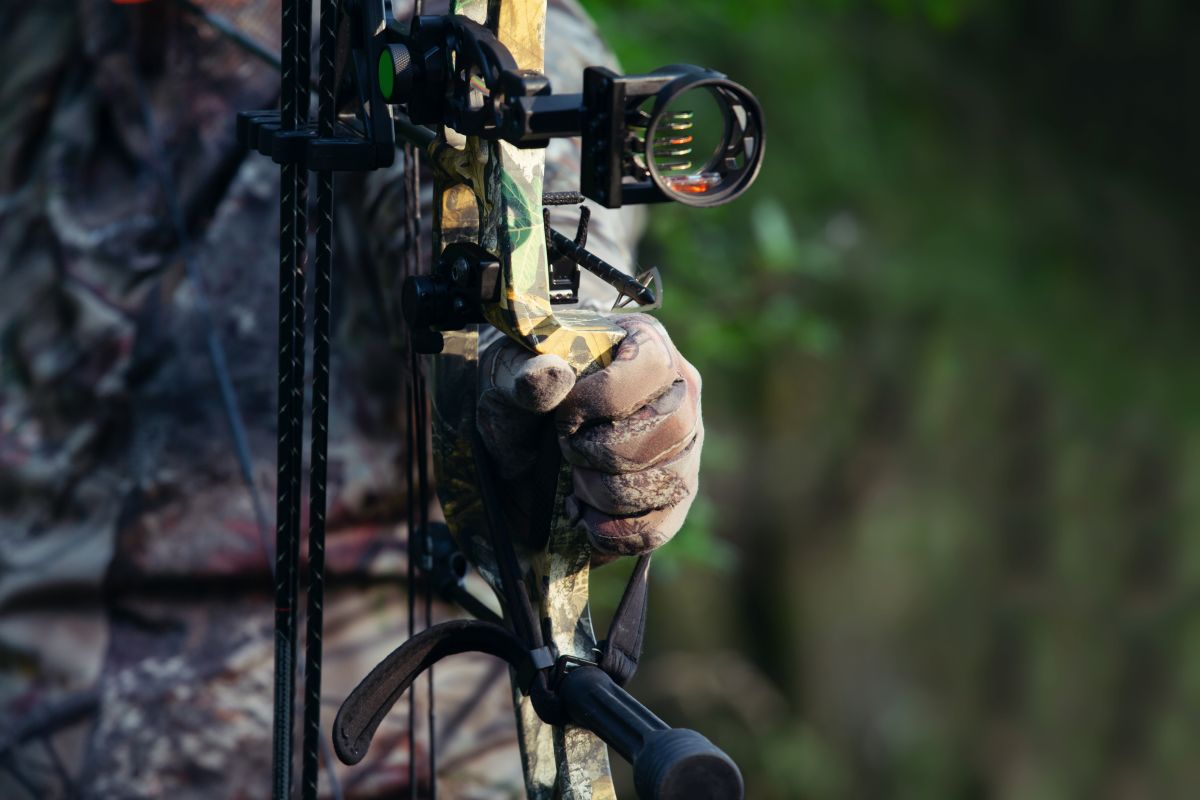Bowhunting Strategies For November

Bowhunting Strategies For November
Ah, Sweet November. Outside of the bowhunting community, most folks only find value in the last Thursday of the month and view the rest as a chilly hurdle separating them from the holiday season. To the bowhunter, though, November is the month we have all been counting down for; it’s Christmas morning, it’s the championship game, it’s Sweet November! But with high anticipation come big expectations, and big expectations put hunters at risk for big disappointment that can lead to a Sour November. Here’s how to capitalize on this magical month.
Breaking Down November
The moniker of Sweet November is somewhat misleading. Although it is true that November is the best month of the year for midwestern deer hunters to see deer movement while they’re in the tree stand, not all of the month is uniformly active. There are many different ways to divvy up November into separate phases of the rut based on these different levels of buck activity, but I choose to divide it into three somewhat distinct segments. I say somewhat because the observation of the activity that happens in all three of these phases occurs throughout late October through the end of November- nature has no hard start and stop dates in most cases, but it does have trends.
The first segment of November can be the most exciting phase of the rut, which kicks off within a few days of Halloween and then runs through Veteran’s Day. This glorious high-traffic phase is one of those rare opportunities when you get to eat your dessert first. Bucks are smelling doe estrus in the breeze for the first time in a year, and they instinctively cruise around much of the day looking for an opportunity to claim a doe.
Following this early November phase comes one of the more challenging portions of November- the lockdown phase. During this portion of the season, bucks (especially older, more dominant bucks) are occupied with does that they have secured breeding rights with. Of course, not all bucks are occupied, but many, if not most, are, as the bulk of does have gone into heat during this timeframe, which in general runs from the 12th of November through the 18th or 19th.
In fact, this week can still provide a great opportunity in comparison to October and December. So, a hunter who has time to hunt should be hunting. Finally comes the last phase of November rut activity- the waning phase of the rut when the big bucks stay on their feet. Most bowhunters feel the pressure to fill their tag by November 20th because at that point they know the most active phases of the rut are done until next year. But the last 10-12 days of November can provide a great opportunity for hunting older bucks and I’ve heard two good explanations for this.
First, are the older bucks that have the experience of many ruts from years past- they know some does are still coming into heat and are available to breed. The other explanation is that the most dominant bucks are busy breeding local does for the first ⅔ of November, and as the end of the month approaches, they expand their range to search for more receptive does to breed. Whether or not these speculations are correct, I have observed more big buck movement in this final phase of November, so don’t lose hope.
So, where are all of the deer?
Buck movement during the rut is a true paradoxical reality for deer hunters. The increased movement of bucks can provide more shot opportunities, but only if a hunter is located where the does are spending their time. In fact, a good rule of thumb to follow is to plan a hunt as if the objective was to fill a doe tag because where the does are is where the bucks are going to be as well. Even with this rule in mind, finding a good rut stand location can be challenging throughout much of Iowa because of our lack of large blocks of habitat in our state. It likes to use bedding areas that offer timbered edges with plenty of chest-high cover, like native grasses and shrubs. If it’s south-facing and at least an acre in size, all the better.
Fortunately, a lot of public land in Iowa has areas that meet these habitat needs, and private land that holds the same can always be sought out for hunting permission. Besides bedding, the other places deer are most frequently found are in and around feeding areas. In November, many of the green food sources are gone, but mast crops like acorns, or cool-season plants like clover, can be hot items, as are grain and bean litter in harvested fields. Look for these feeding locations within a quarter mile of the best doe bedding areas. Bucks can be pushing does around in these types of areas in the evenings.
If premium doe bedding cover and busy feeding areas like this can’t be accessed, another great feature to set up on is the downwind edge of what many deer hunters refer to as a ‘rut funnel.’ A rut funnel is some kind of feature that efficiently links multiple doe bedding and feeding areas together. The best example of a rut funnel is a timbered river bank, but timbered field edges, timbered draws, or even ridgelines through a large block of timber all serve this purpose for bucks to safely travel between different areas with high doe densities.
Weather is another determining factor for where deer will be located during November. Hot weather will have does bed early and bucks taking a break from traveling to hit water sources and bed in the shade near doe bedding areas. Colder weather will mean much more active searching from the bucks and widespread dispersal on the landscape. Heavy rain and wind often cause does to hold tight to bedding areas, and if it’s cold enough, they may even choose to bed out of the wind. Making stand placement choices based on these varying weather conditions can make a significant difference in how many bucks will pass by during a day of hunting.
Strategies
Sometimes it’s fun to think about colloquialisms that have their roots in hunting. Phrases like “more bang for your buck” or “a bird in the hand is worth two in the bush.” One such phrase hunters would do well to recall is “hunt something down.” That old phrase that is often used when trying to locate a lost set of keys or a misplaced passport should also apply to how we approach our hunts during November. Sure, there are times when buck traffic is high enough that just picking a good stand location and passively “waiting them out” is the best approach to take, but many times a more aggressive approach is what is needed to fill a tag.
Aggressive tactics can work any time during the deer season, but they should only be applied sparingly, such as when conditions are perfect to make a move on a buck, or when it’s the peak time to hunt a particular piece of habitat for the season. Then it makes sense to move in tight to bedding and feeding areas, or set up close to hub scrapes and busy trails.
During the rut, not only is it sensible to choose an aggressive stand location, but it also makes sense to use calling techniques such as grunt tubes, snort wheezes, and rattling antlers. All of these strategies are effective, and they are even more effective when they are paired with a realistic decoy. In fact, I have personally rattled in bucks during the rut, but because I had no decoy to pair with the rattling, they wouldn’t fully commit to walking into range.
Another wrinkle to add to a bowhunter’s arsenal is spot-and-stalk hunting. It’s amazing to me how hunters who couldn’t imagine themselves hunting deer from anything other than a treestand or ground blind have so much interest in hauling their bow out west and hunting mule deer, bears, and elk without the aid of these ambush aids.
The fact of the matter is, it works to spot and stalk out west, and fill tags from the ground using terrain features and vegetation for natural cover. This, of course, works for whitetails as well. If a buck is located and he’s not going to be within range of a hunter’s tree stand, the hunter should strongly consider climbing down and getting into position to intercept the buck along his path. There are two-dimensional buck decoys by Heads Up Decoy that can mount to the riser of a bow to buy an extra second to release an arrow.
Some of the most effective bow hunters I know have found a way to merge the two strategies of spot and stalk with treestand hunting. These hardcore buck killers we often refer to as run-and-gun hunters. They enter the woods with their ultralight hang-on treestand, or tree saddle, with a general idea of where they plan to set up, but read and adapt to deer sign, and watch for buck activity on their way to find a tree. Even after they locate a tree they want to use, they often will tear down their setup and move to a better location in the middle of a hunt if they determine there is a better location for them to be.
The best way to achieve this D’Acquistos of Lone Wolf Custom Gear explains it perfectly. They preach the efficacy of only using two climbing sticks for a setup because it makes a hunter more willing to tear down and set up in a better spot if they only have to hassle with two climbing sticks. Their method is extremely effective, and every year it seems they harvest some of the oldest bucks in their area. This method can work very well during the rut because bucks focus so hard on breeding, distracting them from additional movement and disturbance that accompanies this style of hunting.
Now that November is finally here, the time has come for us to capitalize on all of our vacation days we’ve saved up and the hours of preparation we put in during the offseason. Let’s go out and determine where the hottest action is, adjust as the situation dictates, and hunt down our dream buck. That’s how I plan to make this November the sweetest one yet.
By Kent Boucher
November 2025
Here are some items to keep on you while you are out in the field
Or if you are looking for the digital version of this months issue here it is below
Looking for the Cattle/Dairy side of things

